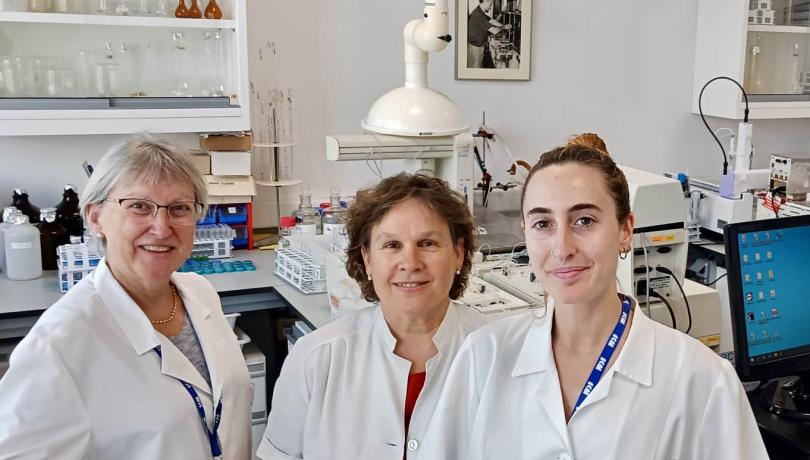This month’s "In Depth" feature focuses on the Nutrient Analysis Service at ICM-CSIC, the team managing it, and its role in monitoring the state of the oceans.

At the Institut de Ciències del Mar (ICM-CSIC), research aimed at understanding and protecting marine ecosystems relies on the cutting-edge Nutrient Analysis Service, which supports institutions, companies, and research centres in analysing essential nutrients in water. This service, led by the ICM’s Chemistry Laboratory team, provides data on the concentration of compounds such as nitrate, nitrite, ammonium, phosphate, and silicate, as well as dissolved organic carbon and other key indicators of ocean health.
Nutrients: The foundations of aquatic life
Nutrients are essential for phytoplankton and microalgae, which form the base of marine food webs. “Photosynthetic organisms capture carbon, produce oxygen, and generate glucose, initiating the life cycle,” explains Elisa Berdalet, Director of the Nutrient Analysis Service and researcher at ICM-CSIC. This process, vital for marine life, also reflects the environmental quality of water.
Berdalet emphasises that “nutrients are not only essential for marine life but also help us understand the dynamics of ocean circulation, land-sea interactions, and the impacts of human activity, such as fertiliser use.”
Specialists in seawater analysis
The ICM Chemistry Laboratory is one of the few facilities dedicated to seawater analysis, a more complex task than studying freshwater. “The concentration of analytes in seawater is thousands of times lower, requiring highly sensitive instruments and rigorous protocols,” explains Maravillas Abad, the service's technical manager. Additionally, the high salt content presents extra challenges in protecting analytical equipment.
Although the team primarily analyses samples from the Mediterranean coast, they work with samples from all over the world, ranging from the pristine waters of Antarctica to European rivers like the Rhône. “Recently, we analysed hundreds of samples in record time for a French university,” notes Abad.
Practical applications: from science to environmental management
The service collaborates with public institutions, environmental companies, and industries such as fish farms and desalination plants. For instance, its carbon analysis was crucial in optimising the Prat desalination plant, ensuring compliance with European regulations. It also contributes to environmental impact assessments related to oil installations, aquaculture, or wastewater treatment plants.
Another critical contribution is monitoring coastal pollution and identifying impacts from human activities or natural processes. Despite this, the team conducts tests "blind," maintaining neutrality to ensure maximum reliability of results.
Towards a global standard for analysis
The ICM actively participates in international initiatives to harmonise analytical protocols. Recently, it joined a global campaign led by the Australian agency CSIRO, where 14 laboratories compared methodologies by analysing fresh samples directly aboard oceanographic ships. “An international standard is essential to ensure results are comparable worldwide, especially in climate change and ocean protection studies,” Berdalet highlights.
In September, the team met in France to discuss the campaign's results and advance toward definitive standardisation. This global collaboration strengthens ICM-CSIC’s position as a key player in international marine science and the fight to preserve ocean ecosystems.